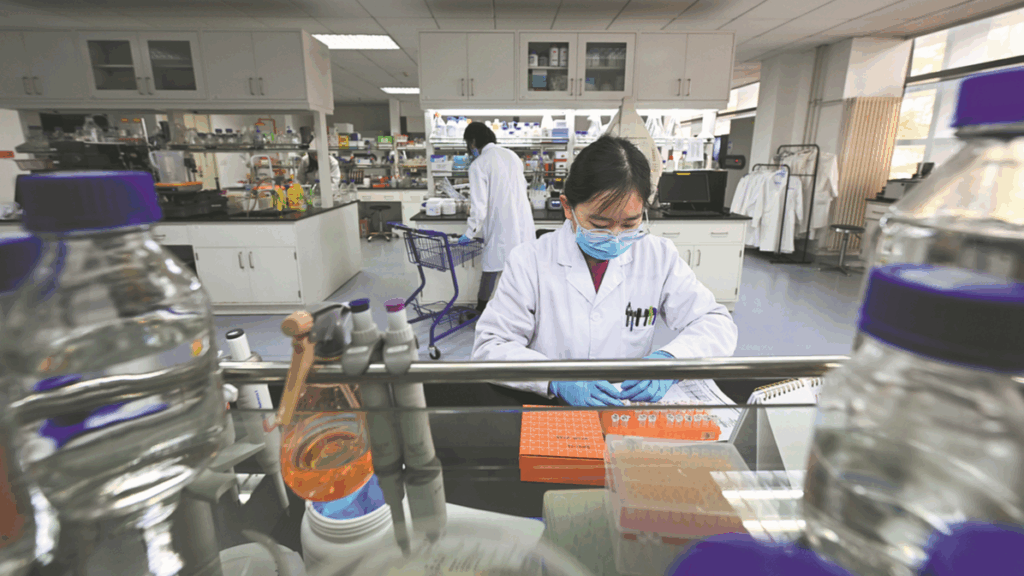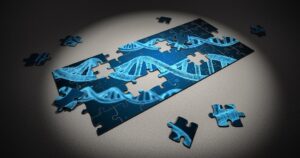
A groundbreaking study from Tianjin University has marked a significant advancement in synthetic biology, potentially paving the way for revolutionary treatments for genetic diseases such as sickle cell disease and congenital deafness. Published in the journal Nature Methods on July 10, the research details the synthesis of a human genome fragment exceeding one million base pairs, which was successfully transferred into mice embryos to verify its function.
This achievement represents a leap forward in human genome synthesis and transfer technology, according to the scientists involved. The human genome, intricately linked to human life, health, and disease, has been a focus of scientific endeavor since the completion of the Human Genome Project in 2003. However, technological bottlenecks have long impeded progress in synthesizing the human genome, particularly due to the complexity of its repetitive sequences.
The Challenge of Genome Synthesis
Over half of the human genome comprises complex repetitive sequences, posing a formidable challenge to precise synthesis. Yuan Yingjin, the lead researcher and an academician of the Chinese Academy of Sciences, likened the task to assembling a jigsaw puzzle with millions of similar-looking pieces.
Yuan’s team developed the SynNICE method to overcome these challenges. “Using this method, we have for the first time completed the synthesis of high-repetition human DNA at the million-base-pair level and efficiently transferred this fragment intact into early mice embryos using a yeast nucleus as the transfer shuttle,” Yuan explained.
“Scientists are no longer content merely to ‘read’ and ‘edit’ the book of life — they now have the ability to ‘write’ new chapters in it,” Yuan added.
Innovative Techniques and Global Implications
Internationally, most research teams are still working at the hundred-kilo-base-pair level, making this development a significant leap forward. The research focused on the AZFa segment of the human Y chromosome, which is associated with male infertility. This segment’s synthesis was particularly challenging due to its high content of repetitive elements, making it prone to mismatches and recombination.
The team employed a combined assembly strategy, dividing the sequence into smaller fragments and using Saccharomyces cerevisiae, or brewer’s yeast, to assemble these into larger structures. The final assembly was achieved using CRISPR-Cas9 and a yeast mating system, resulting in a synthetic chromosome spanning 1.14 million base pairs.
Brewer’s yeast was chosen for its efficient homologous recombination system, which seamlessly joins matching DNA sequences. The challenge of transferring the large genome fragment into mice embryos was addressed by using yeast nuclei as natural carriers, providing protection for the genetic material.
“If transferring DNA across species is like a moon landing mission, our use of yeast nuclei is akin to the spacecraft that safely transports astronauts,” Yuan said.
Future Prospects and Ethical Considerations
This research could illuminate new treatments for diseases related to chromosomal anomalies. By synthesizing key gene fragments, scientists may be able to correct defects causing infertility and guide treatments for conditions such as cancer. The SynNICE method also holds potential for extending the lifespan of xenotransplantation with humanized pig organs, addressing global organ shortages.
Yuan emphasized the importance of substantial resources for basic research and interdisciplinary collaboration, which were crucial for tackling challenges like repetitive sequence assembly and nuclear transfer. The research involved experts from synthetic biology, medicine, developmental biology, and epigenetics, with clinical case support from several hospitals.
While advancing technological innovation, China remains vigilant about biosecurity. In 2017, Tianjin University led an international effort to draft the “Tianjin Biosecurity Guidelines for Codes of Conduct for Scientists,” recognized by the World Health Organization as a global biosecurity standard.
The ability to synthesize large genomes could spark a medical revolution, potentially curing currently incurable diseases and paving the way for new treatments. The study report, titled De novo Assembly and Delivery of Synthetic Megabase-Scale Human DNA into Mouse Early Embryos, highlights this potential.
Shi Yudie and Zang Yifan contributed to this story.







